|
|
| Übersicht – Contents: | |
|
|
| Übersicht – Contents: | |
Flaggen – Flags: |
|
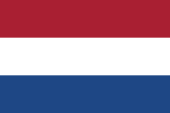 |
National-, Handels- und Marineflagge – national, merchant and naval flag, Seitenverhältnis – ratio = 2:3, Quelle/Source nach/by: Corel Draw 4   |
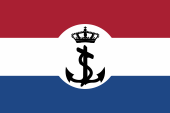 |
Handelsflagge für Reserveoffiziere der Marine – merchant flag for naval reserve officers, Seitenverhältnis – ratio = 2:3, Quelle/Source nach/by: Flags of the World |
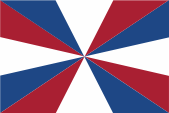 |
Gösch der Marine – naval jack, Seitenverhältnis – ratio = 2:3, Quelle/Source nach/by: Flags of the World |
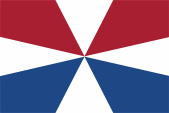 |
zivile Gösch – civil jack, Seitenverhältnis – ratio = 2:3, Quelle/Source nach/by: Flags of the World |
 |
Unterscheidungsflagge für Lotsenfahrzeuge – differentiational flag for pilot's vessels, Seitenverhältnis – ratio = 2:3, Quelle/Source nach/by: Flags of the World |
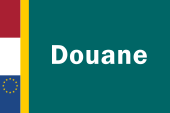 |
Flagge des Zoll – customs flag, Seitenverhältnis – ratio = 2:3, Quelle/Source nach/by: Flags of the World |
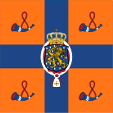 |
Königliche Flagge – royal flag, Seitenverhältnis – ratio = 1:1, Quelle/Source nach/by: Flags of the World |
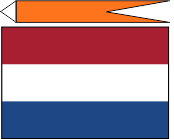 |
Flagge für Konsuln – flag for Consuls, Seitenverhältnis – ratio = 2:3, Quelle/Source nach/by: Die Welt im bunten Flaggenbild |
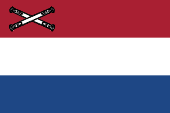 |
Flagge für Admirale und Feldmarschälle – flag for admirals and Field Marshalls, Seitenverhältnis – ratio = 2:3, Quelle/Source nach/by: Flags of the World |
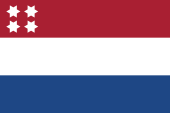 |
Flagge für Leutnant-Admirale – flag for Lieutenant-Admirals, Seitenverhältnis – ratio = 2:3, Quelle/Source nach/by: Flags of the World |
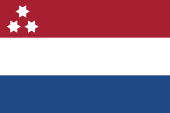 |
Flagge für Vize-Admirale – flag for Vice-Admirals, Seitenverhältnis – ratio = 2:3, Quelle/Source nach/by: Flags of the World |
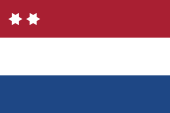 |
Flagge für Konter-Admirale – flag for Rear-Admirals, Seitenverhältnis – ratio = 2:3, Quelle/Source nach/by: Flags of the World |
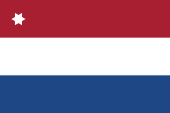 |
Flagge für Flottillen-Admirale – flag for Commodores, Seitenverhältnis – ratio = 2:3, Quelle/Source nach/by: Flags of the World |
historische Flaggen – historical Flags: |
|
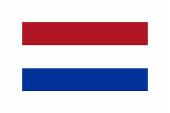 |
1822–20. Jhd/cent., Lotsen(ruf)flagge – pilot flag, Seitenverhältnis – ratio = 2:3, Quelle/Source nach/by: Flags of the World Diese Art Flaggen wurde im 20. Jahrhundert abgeschafft, heute gilt – This type of flag was abolished in the 20th century, today is: |
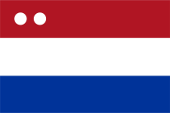 |
bis/to 1930, Flagge für Gouverneure Niederländischer Kolonien – flag for Governors of the Netherlands colonies, Seitenverhältnis – ratio = 2:3, Quelle/Source nach/by: Flags of the World |
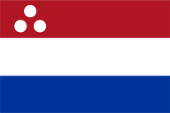 |
1930–1962, Flagge für Gouverneure Niederländischer Kolonien – flag for Governors of the Netherlands colonies, Seitenverhältnis – ratio = 2:3, Quelle/Source nach/by: Flags of the World |
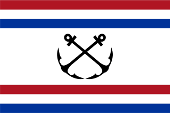 |
1931-1957, Flagge des Marineministers – flag of the Minister of Navy, Seitenverhältnis – ratio = 2:3, Quelle/Source nach/by: Flags of the World |
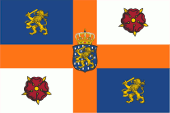 |
1937–2004, persönliche Standarte des Prinzen Bernhard – personal standard of Prince Bernhard, Quelle/Source nach/by: Flags of the World |
Flaggengeschichte – historical Flags: |
|
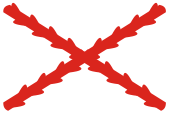 |
1436–1477, Flagge unter den Burgundern – flag under the Burgundians, Quelle/Source nach/by: Wikipedia (EN) |
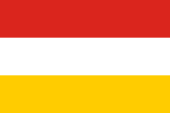 |
1556–1581 (in Belgien/Belgium bis/to 1713), Flagge unter den spanischen Habsburgern – flag under the Spanish Habsburgs, Quelle/Source nach/by: Flags of the World |
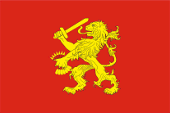 |
1559–1581, inoffizielle Nationalflagge – unofficial national flag, Quelle/Source nach/by: Die Welt der Flaggen |
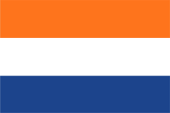 |
1572–1581, inoffizielle Nationalflagge – unofficial national flag, Quelle/Source nach/by: Flags of the World |
 |
1581–ca.1660, Nationalflagge – national flag, Quelle/Source nach/by: Flags of the World |
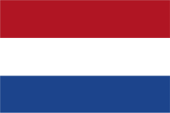 |
ca.1660–1796, Nationalflagge – national flag, Quelle/Source nach/by: Die Welt der Flaggen   |
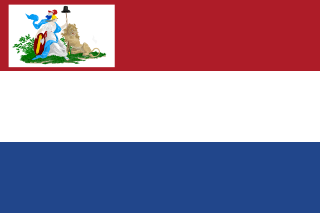 |
1796–1806, Batavische Republik – Batavian Republic, Nationalflagge – national flag, Quelle/Source: Tom Lemmens, CC0, via Wikimedia Commons |
 |
1806–1810, Nationalflagge – national flag, Quelle/Source nach/by: Die Welt der Flaggen   |
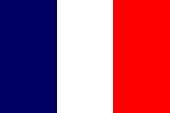 |
1810–1815, die Niederlande gehören zu Frankreich – the Netherlands belong to France, Quelle/Source nach/by: Die Welt der Flaggen  |
 |
seit/since 1815, Nationalflagge – national flag, Quelle/Source nach/by: Die Welt der Flaggen   |
| Die niederländische Flagge ist die älteste republikanische Trikolore der Welt. Sie wurde im Freiheitskampf gegen Spanien unter Führung des Prinzen von Oranien-Nassau im Jahre 1572 von den Geusen (Widerstandsbewegung) eingeführt. Sie zeigte damals drei waagerechte Streifen in Orange, Weiß und Blau, den Livreefarben (Wappenfarben) des Prinzen von Oranien-Nassau. Man nennt sie deshalb noch heute "Prinsenvlag" (→ Prinzenflagge). Mit der Gründung der Republik der Vereinigten Niederlande (1581) wurde diese Flagge offiziell als Nationalflagge angenommen. | The Dutch
flag is the oldest Republican tricolor of the world. She was introduced
during the freedom-fight against Spain under the leadership of the Prince of
Orania-Nassau in the year 1579 by the Geuzen (resistance movement). It showed at that time three horizontal dtripes in orange, white and blue, the livery colours (blazon colours) of the Prince of Orania-Nassau. Because of that it is named until today "Prinsenvlag" (→ Prince's Flag). In context with the establishment of the Republic of the United Nethterlands (1581) it was officially adoped as national flag. |
| Der orangefarbene Streifen wurde etwa ab 1660 allmählich durch einen roten Streifen ersetzt. Diese Farbvariante geht auf die "Statenvlag" (→ Staatenflagge) zurück, die Marineflagge der Generalstaaten des frühen 17. Jahrhunderts. Als Grund für diese Änderung wird häufig folgende Erklärung angegeben: Die Flagge in Orange, Weiß und Blau wurde zur See verwendet und der orangefarbene Farbstoff war auf See vermutlich nicht sehr beständig und die Farbe auf größere Distanz schlecht zu erkennen. Rot war da besser geeignet und bot sich als Alternative an. Dennoch wurde und blieb Orange die Nationalfarbe der Niederländer. | The
orange-coloured stripe was superseded about since 1660 by a red stripe. This
colour variant goes back to the "Statenvlag" (→ States Flag), the naval flag
of the States-General in the early 17th century. The following explanation
is often given as the reason for this change: The flag in orange, white and blue was used at sea and the orange dye was at sea probably not very stable and bad to discern in distances. Red was for this use better suitable and present itself as an alternative. Anyhow became and maintained orange as the national colour of the Netherlanders. |
| Im Jahre 1795 wurden die Niederlande von französischen Revolutionstruppen besetzt, und es wurde anstelle der Niederlande die "Batavische Republik" proklamiert. Um die Flagge revolutionärer, oder auch "französischer" aussehen lassen, wurde der vereinzelt immer noch verwendete orangefarbene Streifen ganz offiziell – d.h. per Beschluss oder Gesetz – am 14.02.1796 durch einen roten Streifen ersetzt. Im nun roten Streifen soll in der Nähe des Mastes auch eine allegorische Szene in einem weißen Rechteck ergänzt worden sein, aber diese Variante setzte sich für die Dauer der "Batavischen Republik" wohl nie durch. | In the year 1795 the Netherlands were occupied by French revolutionar troops and there was proclaimed instead of the Netherlands the "Batavian Republic". To have the flag looking more revolutionar or more "French" they officially superseded – what means by resolution or statute – the occasional still used orange-coloured stripe by a red stripe on the 14th of February in 1796. In the now red stripe should have been placed near the pole even an allegorical scene in a white rectangle but this variant accomplished indeed not for the period of the "Batavian Republic". |
| Im Jahre 1806 wurden die Niederlande "Königreich Holland", und die Farbe Rot im oberen Streifen wurde ausdrücklich gesetzlich bestätigt. Im Jahre 1810 wurde das "Königreich Holland" Frankreich direkt angegliedert, und die niederländische Flagge wurde verboten. Es musste die französische Trikolore verwendet werden. Nach Abzug der Franzosen (1814) wurde der Gebrauch der niederländischen Flagge wieder erlaubt, und die Niederländer hissten Flaggen mit Streifen in Orange, Weiß und Blau. Der rote Streifen wurde jedoch offiziell beibehalten und 1816 durch königliche Verordnung bestätigt, und zwar am 19.02.1937. Das war erneut notwendig geworden, weil die Prinzenflagge während der Wirtschaftskrise der 1930er Jahre erneut sehr populär geworden war. Im Jahre 1949 wurden die Farben erstmals standardisiert. Im November 1958 legte das NEN (Niederländisch-Königliches Institut für Standardisierung), die Farben fest, für Rot als RAL 2002 "Helles Zinnoberrot" (HEX #A91F32) und für Blau als RAL 5013 "Kobaltblau" (HEX #1E4785), was Pantone 187 und 541 entsprechen würde. | In the
year 1806 the Netherlands became the "Kingdom of Holland" and the colour red
in the upper stripe was explicitly lawful confirmed. In the year 1810 the
"Kingdom of Holland" got directly annexed by France and the Netherlands
Tricolor got prohibited. There was to use the French Tricolor. After the
withdrawal of the Frenchman (1814) it was allowed to use again the
Netherlands flag and the Netherlanders hoisted flags with stripes in orange,
white and blue. The red stripe was however officially maintained and in 1816 confirmed by royal decree, in fact on the 19th of February in 1937. This had become necessary again because the Prince's Flag had once more become very popular during the economic crisis of the 1930s. In 1949 the colours were standardised for the first time. In November 1958, the NEN (Dutch Royal Institute for Standardisation), defined the colours, for red as RAL 2002 "Light Vermilion" (HEX #A91F32) and for blue as RAL 5013 "Cobalt Blue" (HEX #1E4785), which would correspond to Pantone 187 and 541. |
| Aus den niederländischen Nationalfarben wurden durch Zar Peter den Großen (Regentschaft: 1682–1725) die panslawischen Farben entwickelt, da er aus den Farben der Niederlande (Blau, Weiß und Rot) die Farben Russlands machte (Weiß, Blau und Rot). | From the Netherlands national colours were developed by tsar Peter the Great (regency: 1682–1725) the panslavic colours, because he made the colours of the Netherlands (blue, white and red) to the colours of Russia (white, blue and red). |
| Unter der Herrschaft der Burgunder zeigten die Schiffe niederländischer Staaten und Provinzen das rote geastete Burgundische Kreuz auf weißem Grund. Im Jahre 1556 fielen die Niederlande an die Spanischen Habsburger und es wurde eine Flagge eingeführt, welche die Farben Spaniens mit denen des Hauses Habsburg verband. Sie war wagerecht gestreift und zeigte die Farben Rot, Weiß und Gelb. Mit dem Beginn des Widerstands gegen die Spanischen Habsburger wurde wahrscheinlich ab dem Jahre 1559 im Untergrund eine Flagge verwendet, die einfarbig rot war und den goldenen niederländischen Löwen mit einem Schwert und einem Bündel von 17 Pfeilen in der Pfote zeigte. Diese Flagge wurde durch farbliche Umkehrung aus dem Wappen von Holland entwickelt, Jedoch erhielt der Löwe als Zeichen des Widerstandes ein Schwert in die Hand. Die Pfeile standen für die 17 Provinzen und verkörperten das Motto "Eendracht maakt Macht" → "Einigkeit macht stark". Nach der Gründung der Utrechter Union (1579) wurden die Pfeile für die unter spanischer Herrschaft verbliebenen 10 Provinzen entfernt. Diese Flagge wurde nach der Gründung der Republik der Vereinigten Niederlande (1581) bis zur Napoléonischen Zeit nur noch bei der niederländischen Marine und als Gösch verwendet. | Under the
rule of the Burgundians vessels of Dutch states and provinces showed the red
Burgundian Cross with boughes on white ground.
In the year 1556 the Netherlands came to the Spanish Habsburgs and they
introduced a flag which combines the colours of Spain with the colours of
the House of Habsburg. It was horizontally striped and showed the colours
red, white and yellow. |
| Quelle/Source: Flags of the World, Das Flaggenbuch, Wikipedia (EN) | |
Wappen – Coat of Arms: |
|
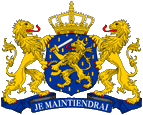 |
seit 1815, Wappen der Niederlande – coat of arms of the Netherlands, Quelle/Source: Corel Draw 4 |
historische Wappen – historical Coats of Arms: |
|
 |
Wappenschild der Grafschaft Holland – blazon of the County of Holland, Quelle/Source nach/by: Corel Draw 4 |
 |
1579–1795 (inoffiziell seit / unofficial since 1559), Wappen der "Utrechter Union" und der "Republik der Vereinigten Niederlande" – coat of arms of the "Utrecht Union" and of the "Republic of the United Netherlands", Quelle/Source nach/by: Corel Draw 4 |
| Das Staatswappen der Niederlande zeigt im blauen mit goldenen Schindeln belegten Feld den goldenen Löwen der Utrechter Union, in der Rechten ein Schwert, in der Linken ein Bündel von sieben Pfeilen. Oberhalb des Schildes die niederländiche Krone. Schildhalter sind ebenfalls goldenen Löwen. Unter dem Schild das Motto von Königs Wilhelm I. "Je Maintiendrai" → "Ich werde beharren". Das Wappen wurde durch einen Erlass des Königs Wilhelm I. am 24.08.1815 eingeführt. | The coat of arms of the Netherlands shows in a blue field coated by golden shingles the golden lion of the Utrecht Union, in the right paw a sword, in the left paw a bundle of seven arrows. Above the shield the Netherlands crown. Shield supporters are likewise golden lions. Below the shield the motto of king William I. "Je Maintiendrai" → "I will persist". The coat of arms was introduced by a decree of King William I. on the 24th of August in 1815. |
| Das heutige Wappen der Niederlande somit Prinzip eine Kombination der Wappen des Hauses Oranien-Nassau und der Utrechter Union. Für die 1579 gegründete Utrechter Union wurde ein Wappen angenommen, das aus der Flagge antispanischen Untergrundkämpfer hervorging. Es zeigte einen roten Schild mit einem goldenen Löwen mit einem Schwert und einem Bündel von 17 Pfeilen in der Pfote. Dieses Wappenbild war in farblicher Umkehrung aus dem Wappen der Grafschaft Holland entwickelt worden. Jedoch erhielt der Löwe als Zeichen des Widerstandes ein Schwert in die Hand. Die Pfeile standen für die 17 Provinzen der Niederlande, später für die 7 Provinzen der Utrechter Union. Dieser goldene Löwe wurde 1815 gekrönt und im blauen mit goldenen Schindeln belegten Wappenschild des Hauses Nassau platziert. | The
today's coat of arms of the Netherlands is in this way a combination of the
heraldry of the House of Orania-Nassau and of the Utrecht Union. The in
1579 established Utrecht Union adoped a scutcheon which descents from the
flag of the anti-Spanish underground fighters. It showed a red shield with a golden lion with a sword and a bundle of 17 arows in the paw. That scutcheon figure was developed by inversion of colours from the coat of arms of the County of Holland. But the lion received a sword in the hand as a sign of resistance. The arrows stood for the 17 provinces of the Netherlands afterward for the 7 provinces of the Utrecht Union. This golden lion was crowned and placed in the year 1815 in the blue blazon – coated by golden shingles – of the House of Nassau. |
| Das Haus Nassau entstand im Jahre 1160 und teilte sich über die Jahre in viele Linien: z.B. Nassau-Diez, Nassau-Dillenburg, Nassau-Siegen, Nassau-Usingen und Nassau-Weilburg. Das Wappen des Hauses Nassau zeigt einen goldenen Löwen auf einem blauen, mit goldenen Schindeln belegten Feld. | The House of Nassau arised in the year 1160 and splited in the course of times in many lines: e.g. Nassau-Diez, Nassau-Dillenburg, Nassau-Siegen, Nassau-Usingen and Nassau-Weilburg. The coat of arms of the House of Nassau shows a golden lion on a blue field coated by golden shingles. |
| Der Titel der Fürsten von Oranien (französisch: Orange) war 1530 an die Grafen von Nassau-Dillenburg gekommen, die sich Prinzen von Oranien nannen (Haus Nassau-Oranien). Wilhelm der Schweiger von Nassau-Dillenburg erbte den Titel im Jahre 1544. Er wurde 1581 als Wilhelm I. Statthalter der Niederlande. Die Heraldik von Oranien (Fürstentum Orange) zeigte einen orangefarbenen Schild (eigentlich golden) mit einem blauen Jagdhorn darin. | The title of the Princes (Lords) of Orania (French: Orange) came in the year 1530 to the Counts of Nassau-Dillenburg which named themselves Princes of Orania (Haus Nassau-Orania). William the Silent of Nassau-Dillenburg inherited the titel in the year 1544. He became in 1581 as William I. Proconsul of the Netherlands. The heraldry of Orania (Principality of Orange) showed an orange-coloured shield (actually golden) with a blue bugle in it. |
| Die Grafschaft Holland entstand im 10. Jahrhundert und fiel im Jahre 1299 als Erbschaft an die Grafen von Hennegau (flämisch: Henegouwen, französisch: Hainaut). Diese starben mit dem Tod des letzten Grafen von Hennegau und Holland im Jahre 1345 aus. Das Wappen der Grafschaft Holland zeigte einen roten Löwen auf goldenem Grund. | The
County of Holland arised in the 10th century and came in the year 1299 as
inheritance to the Counts of Hennegau (Flemish: Henegouwen, French:
Hainaut). Those vanish with the death of the last Count of Hennegau and Holland in the year 1345. The coat of arms of the County of Holland showed a red lion on golden ground. |
| Die Niederländischen Freiwilligen, die im Zweiten Weltkrieg freiwillig an der Seite des Deutschen Reiches gegen die Sowjetunion kämpften, trugen als Ärmelabzeichen einen Schild in den Landesfarben der Niederlande, jedoch diagonal von links oben nach rechts unten verlaufend. | The Dutch volunteers, which voluntary fought on the side of the German Empire against the Soviet Union in the Second World War used as sleeve-insignia a shield in the colours of the country of the Netherlands but passing diagonally from left above to right below. |
| Quelle/Source: Die Welt der Flaggen, Flaggen und Wappen der Welt, Avantgarde für Europa, Wikipedia (DE) | |
|
Lesen Sie hier: Hintergründe, Geschichte und Fakten zum Thema "Der Löwe in der Heraldik". Ausführungen, Varianten, Entwicklung sowie Panther und Leoparden. |
 |
Flugzeugkokarde – aircraft roundel: |
|
 |
1914–1921, Flugzeugkokarde – aircraft roundel Quelle/Source, nach by: Wikipedia (EN) |
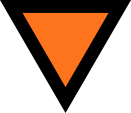 |
1939–1940, Flugzeugkokarde – aircraft roundel Quelle/Source, nach by: Wikipedia (EN) |
 |
seit/since 1945, Flugzeugkokarde – aircraft roundel Quelle/Source, nach by: Wikipedia (EN) |
Landkarte – Map: |
Lage – Position: |
Landkarte des Landes – Map of the Country: |
|
|
| Zahlen und Fakten – Numbers and Facts: | |
|
|
|
|
|
|
|
|
|
|
|
|
|
|
|
|
|
|
|
|
| Antike ·
Besiedelung durch die germanischen Stämme der Bataver, Friesen und Sachsen 8. Jahrhundert · Eroberung durch die Franken 843 · bei der Teilung des Frankenreiches kommt das Gebiet der heutigen Niederlande zum Königreich Lotharingien und ab 870 an das Ostfränkische Reich und ab 962 zum Deutschen Reich, nur die Grafschaft Flandern und die Grafschaft Artois kommen an das Westfränkische Reich/Frankreich Mittelalter · Herausbildung lokaler weltlicher und kirchlicher Fürstentümer in den Niederlanden (z.B. Herzogtum Brabant, Herzogtum Limburg, Herzogtum Geldern, Herzogtum Luxemburg, Grafschaft Seeland, Grafschaft Hennegau, Grafschaft Holland, Grafschaft Namur, Bistum Lüttich, Bistum Utrecht) 1345 · die Bayerischen Wittelsbacher erwerben die Grafschaften Hennegau, Seeland und Holland 1384 · das Herzogtum Burgund erwirbt die Grafschaften Artois und Flandern 1436 · das Herzogtum Burgund erwirbt die Grafschaften Hennegau, Seeland und Holland sowie die Herzogtümer Brabant und Limburg 1436–1477 · das Herzogtum Burgund erwirbt das Bistum Lüttich und das Herzogtum Luxemburg 1477 · Tod des letzten burgundischen Herzogs (Karl der Kühne), durch Heirat seiner Tochter Maria mit Maximilian von Habsburg kommen die burgundischen Niederlande an das Haus Habsburg 1482 · die Grafschaft Flandern kommt an das Haus Habsburg und damit an das Deutsche Reich 1493 · die Grafschaft Artois kommt an das Haus Habsburg und damit an das Deutsche Reich 1507 · Einsetzung von Margarete von Österreich als Generalstatthalterin der Niederlande (bis 1530), erste gemeinsame Verwaltung für die 17 Provinzen der Niederlande 1528 · das Bistum Utrecht kommt an das Haus Habsburg 1543 · das Herzogtum Geldern kommt an das Haus Habsburg 1556 · das Haus Habsburg teilt sich in eine spanische und eine österreichische Linie, die Niederlande kommen an die Spanische Linie (→ Spanische Niederlande), durch sich verstärkenden religiösen und finanziellen Druck kommt es zu ersten Aufständen der Niederländer gegen die spanischen Herrscher 1567 · Einsetzung des Herzogs Alba als Generalstatthalter der Niederlande, Entfaltung eines Terrorsystems, Gegenwehr durch die Freiheitsbewegung der "Geusen" zu Lande und zu Wasser 1572 · die Geusen erobern die Stadt Brielle 1572–1578 · Feldzüge der Spanier zur Festigung der Herrschaft, es gelingt nur die zehn südlichen Provinzen (das heutige Belgien) zu sichern, die sieben nördlichen Provinzen (die heutigen Niederlande) können nicht gehalten werden 23.01.1579 · die sieben nördlichen Provinzen (Holland, Seeland, Utrecht, Geldern, Groningen, Overijssel und Friesland) schließen sich zur "Utrechter Union" zusammmen 26.07.1581 · die Utrechter Union erklärt als "Republik der Vereinigten Niederlande" ihre Unabhängigkeit von Spanien, Bildung eines gemeinsamen Parlaments (Generalstaaten) als höchste Autorität, die führende Provinz Holland wird durch einen "Ratspensionär" regiert, Einsetzung von Wilhelm von Oranien aus dem Hause Oranien-Nassau als Statthalter der Niederlande, die Niederlande gehören damit de facto nicht mehr zum Deutschen Reich 1584 · Ermordung von Wilhelm von Oranien, Nachfolger wird sein Sohn Moritz, erneut Feldzüge der Spanier zur Rückgewinnung der Herrschaft 1588 · Untergang der Spanischen Armada (130 Schiffe, 2630 Kanonen, 30 000 Mann) 1609 · Waffenstillstand zwischen Spanien und den Niederlanden 24.10.1648 · Westfälischer Friede, Ende des Dreißigjährigen Krieges in Deutschland, Spanien erkennt dabei die Unabhängigkeit der Niederlande an 17./18. Jahrhundert · Bürgerkrieg zwischen Truppen des Ratspensionärs und des Statthalters, die Niederlande erwerben Kolonialbesitz in der ganzen Welt 1689 · der Statthalter Wilhelm III. von Oranien wird König von England, England und die Niederlande werden bis 1702 in Personalunion regiert 1701–1713 · Spanischer Erbfolgekrieg 1713 · Frieden von Utrecht, die ehemals Spanischen Niederlande (Belgien) kommen an Österreich (Haus Habsburg) 1747 · Wilhelm IV. von Oranien wird Erb-Statthalter, Etablierung der niederländischen Monarchie 1780–1784 · Kolonialkrieg gegen Großbritannien, die Niederlande müssen Teile ihres Kolonialbesitzes an Großbritannien abtreten 1794 · die Österreichischen Niederlande (Belgien) werden von französischen Revolutionstruppen erobert 1795 · die Niederlande werden von französischen Revolutionstruppen erobert, Flucht von Wilhelm V. von Oranien, Bildung der "Batavischen Republik" 1799–1802 · Krieg gegen Großbritannien, die Niederlande müssen erneut Teile ihres Kolonialbesitzes an Großbritannien abtreten 1806–1810 · die Batavische Republik wird "Königreich Holland" unter Napoléons Bruder Ludwig (Louis Napoléon) 1810 · die südlichen Niederlande (Belgien) und das "Königreich Holland" (nördliche Niederlande) werden Frankreich direkt angegliedert 1814 · anti-napoleonischer Aufstand in den südlichen Niederlanden und den nördlichen Niederlanden 29.03.1815 (Wiener Kongress) · Gründung des Königreichs der Vereinten Niederlande unter Einschluss des Großherzogtums Luxemburg und des Fürstbistums Lüttich, Thronbesteigung durch Wilhelm I. von Oranien-Nassau, König der Niederlande und Großherzog von Luxemburg 18.11.1830 · das französischspachige, katholische Belgien verlässt das Königreich der Vereinten Niederlande auf Grund von Unstimmigkeiten mit dem flämischsprachigen, calvinistischen Norden, das Königreich zerbricht 1848 · liberale Verfassung 1890 · die Personalunion mit Luxemburg erlischt 1914–1818 · Erster Weltkrieg, die Niederlande bleiben neutral 1922 · neues Wahlrecht 10.05.1940 (Zweiter Weltkrieg) · die Niederlande werden von deutschen Truppen besetzt, Regierung und Königin fliehen nach Großbritannien und bilden eine Exilregierung, 58.000 Niederländer kämpfen nun freiwillig an der Seite des Deutschen Reiches gegen die Sowjetunion, jedoch auch Entstehen einer Widerstandsbewegung 11.01.1942 · Japan greift Niederländisch-Indien (Indonesien) an und besetzt große Teile der Kolonie 05.05.1945 · Kapitulation der Deutschen Wehrmacht in den Niederlanden 17.08.1945 · Niederländisch-Indien erklärt als "Republik Indonesien" in Batavia seine Unabhängigkeit 1945–1947 · Kolonialkrieg der Niederlande gegen Indonesien 1947 · Vertrag von Linggadjati: Anerkennung der Republik Indonesien auf Jawa, Madura und Sumatra 1947–1949 · Bürgerkrieg in Indoniesien, die Niederlande greifen militärisch ein 27.12.1949 · Vertrag von Den Haag: Gewährung der Unabhängigkeit für ganz Indonesien, außer für Westirian und die Südmolukken, Umwandlung des Landes in eine Föderation, Bindung an die niederländische Krone im Rahmen der Niederländisch-Indonesischen Union 24.03.1950 · die Niederlande gewähren den Südmolukken die Unabhängigkeit 1951 · Belgien, Deutschland, Frankreich, Italien, Luxemburg und die Niederlande, gründen die EWG (die spätere EU) 11.08.1954 · Indonesien kündigt die Niederländisch-Indonesischen Union 1954 · Niederländisch-Surinam und die Niederländischen Antillen erhalten Autonomie 31.12.1962 · Westirian wird von den Niederlanden an die UNO übergeben 1975 · die Niederlande gewähren Surinam die Unabhängigkeit 1986 · die Insel Aruba verlässt den Verbund der Niederländischen Antillen weitestgehend 10.10.2010 · die Niederländischen Antillen werden administrativ aufgelöst – Curaçao und Sint Maarten werden autonome Länder innerhalb der Niederlande (wie schon Aruba 1986), Bonaire, Sint Eustatius und Saba werden Besondere Gemeinden der Niederlande, die jedoch zu keiner Provinz gehören |
| antiquity
· settlement by the Germanic tribes of the Batavians, Frysks and Saxons 8th century · conquest by the Franks 843 · at the division of the Frankish Empire comes the Territority of the today's Netherlands to the Kingdom of Lotharingia and since 870 to the East Frankish Empire and since 962 to the German Empire, only the County of Flanders and the County of Artois come to the West Frankish Empire/France middle ages · evolution of local secular and clerical principalities in the Netherlands (e.g. Duchy of Brabant, Duchy of Limburg, Duchy of Guelders, Duchy of Luxemburg, County of Zealand, County of Hainaut, County of Holland, County of Namur, Diocese of Liège, Diocese of Utrecht) 1345 · the Bavarian House of Wittelsbach acquires the Counties of Hainaut, Zealand and Holland 1384 · the Duchy of Burgund acquires the Counties of Artois and Flanders 1436 · the Duchy of Burgund acquires the Counties of Hainaut, Zealand and Holland as well as the Duchies of Brabant and Limburg 1436–1477 · the Duchy of Burgund acquires the Diocese of Liège and the Duchy of Luxembourg 1477 · death of the last Burgundian Duke (Charles the Audacious), by the marriage of its daughter Maria with Maximilian of Habsburg come the Burgundian Netherlands to the House of Habsburg 1482 · the County of Flanders comes to the House of Habsburg and in this way to the German Empire 1493 · the County of Artois comes to the House of Habsburg and in this way to the German Empire 1507 · appointment of Margaret of Austria as Proconsul General in the Netherlands (to 1530), first common administration for the 17 provinces of the Netherlands 1528 · the Diocese of Utrecht comes to the House of Habsburg 1543 · the Duchy of Guelders comes to the House of Habsburg 1556 · the House of Habsburg divides itself in a Spanish and in a Austrian line, the Netherlands come to the Spanish line (→ Spanish Netherlands), by intensifing religious and financial pressure arise first riotings of the Netherlanders against the Spanish sovereigns 1567 · appointment of the Duke of Alba as Proconsul General of the Netherlands, development of a system of terror, rejection by the freedom movement of the "Geuzen" at land and at sea 1572 · the Geuzen conquer the Town of Brielle 1572–1578 · campaign of the Spaniards for consolidation of the rule, they are only able to protect the ten southern provinces (the today's Belgium), it is not possible to hold the seven northern provinces (the today's Netherlands) 23rd of January 1579 · the seven northern provinces (Holland, Zealand, Utrecht, Guelders, Groningen, Overijssel and Friesland) join together to the "Utrecht Union" 26th of July 1581 · the Utrecht Union declares it's independence from Spain as "Republic of the United Netherlands", formation of a common parliament (Generalstaaten) as supreme authority, the leading Province of Holland gets governed by a "Counsel Pensioner", insertion of William of Orania from the House of Orania-Nassau as Proconsul of the Netherlands, the Netherlands are in this way de facto no longer a part of the German Empire 1584 · assassination of William of Orania, successor is his son Moritz, once more campaigns of the Spaniards to win back the rule 1588 · sinking of the Spanish Armada (130 vessels, 2630 canons, 30 000 man) 1609 · armistice between Spain and the Netherlands 24th of October 1648 · Peace of Westfalia, end of the Thirty Years War in Germany, Spain recognizes with it the independence of the Netherlands 17th/18th century · civil war between troops of the des Counsel Pensioner and the Proconsul, the Netherlands acquire colonial possessions in the whole world 1689 · the Proconsul William III. of Orania becomes King of England, England and the Netherlands are governed in personal union until 1702 1701–1713 · Spanish War of Succession 1713 · Peace of Utrecht, the former Spanish Netherlands (Belgium) come to Austria (House of Habsburg) 1747 · William IV. of Orania becomes Heritable Proconsul, establishment of the Netherlands monarchy 1780–1784 · colonial war against United Kingdom, the Netherlands have to cede parts of their colonial possessions to United Kingdom 1794 · the Austrian Netherlands (Belgium) become conquered by French revolutionar troops 1795 · the Netherlands become conquered by French revolutionar troops, escape of William V. of Orania, establishment of the "Batavian Republic" 1799–1802 · war against United Kingdom, the Netherlands have to cede once more parts of their colonial possessions to United Kingdom 1806–1810 · the Batavian Republic becomes "Kingdom of Holland" under Ludwig the brother of Napoléon (Louis Napoléon) 1810 · the southern Netherlands (Belgium) and the "Kingdom of Holland" (northern Netherlands) become directly annexed by France 1814 · anti-Napoléonic riot in the southern Netherlands and in the northern Netherlands 29th of March 1815 (Vienna Congress) · establishment of the Kingdom of the United Netherlands by inclusion of the Grand Duchy of Luxembourg and the Prince Diocese of Luettich, accession to the Throne by William I. of Orania-Nassau, King of the Netherlands and Grand Duke of Luxembourg 18th of November 1830 · the French speaking and catholic Belgium leaves the Kingdom of the United Netherlands because of discrepancies with the Flemish speaking and calvinistic north, the kingdom breaks 1848 · liberal constitution 1890 · the personal union with Luxembourg expires 1914–1818 · First World War, the Netherlands remain neutrally 1922 · new suffrage 10th of May 1940 (Second World War) · the Netherlands become occupied by German troops, government and queen escape to United Kingdom and establish an exile government, 58.000 Netherlanders fight now voluntary on the side of the German Empire against the Soviet Union, but also arise of a resistance movement 11th of January 1942 · Japan attacks the Dutch East Indies (Indonesia) and occupies large parts of the colony 5th of May 1945 · capitulation of the German War Might in the Netherlands 17th of August 1945 · the Dutch East Indies declare its independence in Batavia as "Republic of Indonesia" 1945–1947 · colonial war of the Netherlands against Indonesia 1947 · Treaty of Linggadjati: recognition of the Republic of Indonesia on the islands Java, Madura and Sumatra 1947–1949 · civil war in Indoniesia, the Netherlands intervene militarily 27th of December 1949 · Treaty of Den Haag: granting of the independence for whole Indonesia, except West Irian and the South Molucca Islands, transformation of the country into a federation, allegiance to the Netherlands crown by the framework of the Netherlands Indonesian Union 24th of March 1950 · the Netherlands grant the independence to the South Molucca Islands 1951 · Belgium, Germany, France, Italy, Luxembourg and the Netherlands, found the EEC (the later EU) 11th of August 1954 · Indonesia terminates the Netherlands Indonesian Union 1954 · Netherlands Suriname and the Netherlands Antilles get autonomy 31st of December 1962 · West Irian gets transfered from the Netherlands to the UN 1975 · the Netherlands grant the independence to Suriname 1986 · Aruba Island leaves the association of the Netherlands Antilles most appreciably 10th of October 2010 · Netherlands Antilles become dissolved administratively – Curaçao and Sint Maarten become an autonomous country within the Netherlands (like Aruba in 1986), Bonaire, Sint Eustatius and Saba become special municipalities of the Netherlands, but don't belong to any province |
| Quelle/Source: Atlas zur Geschichte, Avantgarde für Europa, Wikipedia (DE) |
| Der Name "Niederlande" hat germanische Wurzeln, und das Land hat seinen Namen erhalten, weil es eben nicht im Bergland liegt, sondern in "niederem Land", jenseits der Mittelgebirge, am Unterlauf des Rheins. Die Niederlande werden manchmal auch als "Holland" bezeichnet, oft sogar von den Niederländern selbst. Dieser Name leitet sich von der alten Grafschaft Holland ab, die im 10. Jahrhundert entstand, und durch ihre Hauptstadt Amsterdam zur bedeutendsten Provinz der "Utrechter Union" (nördlichen Niederlande) aufstieg, und so innerhalb der Niederlande eine absolute Führungsposition innehatte. Die Provinz Holland hatte im 16., 17. und 18. Jahrhundert sogar eine eigene Regierung. Von 1806 bis 1810 wurden die ganzen nördlichen Niederlande als "Königreich Holland" von Napoléons Gnaden zusammengefasst. So hat sich der Name "Holland" als Bezeichnung für das ganze Land bis heute erhalten. | The name
"Netherlands" has German roots and the country received its name because it
is just not situated in hilly regions but in "lower land" beyond the
mountain ranges, in the lower stretches of the River Rhine. The Netherlands are sometimes named as "Holland" even often by the Netherlanders themselves. That name is derived from the ancient County of Holland which arised in the 10th century and ascended because of its capital Amsterdam to the most important province of the "Utrecht Union" (northern Netherlands) and holded in this way an absolute leading position within the Netherlands. The Province of Holland had in the 16th, 17th and 18th century even an own government. From the year 1806 to 1810 had been summarized the whole northern Netherlands as "Kingdom of Holland" by Napoléon's mercy. In this way the name "Holland" had maintained as denomination for the whole country until today. |
| Quelle/Source: Handbuch der geographischen Namen, Volker Preuß | |